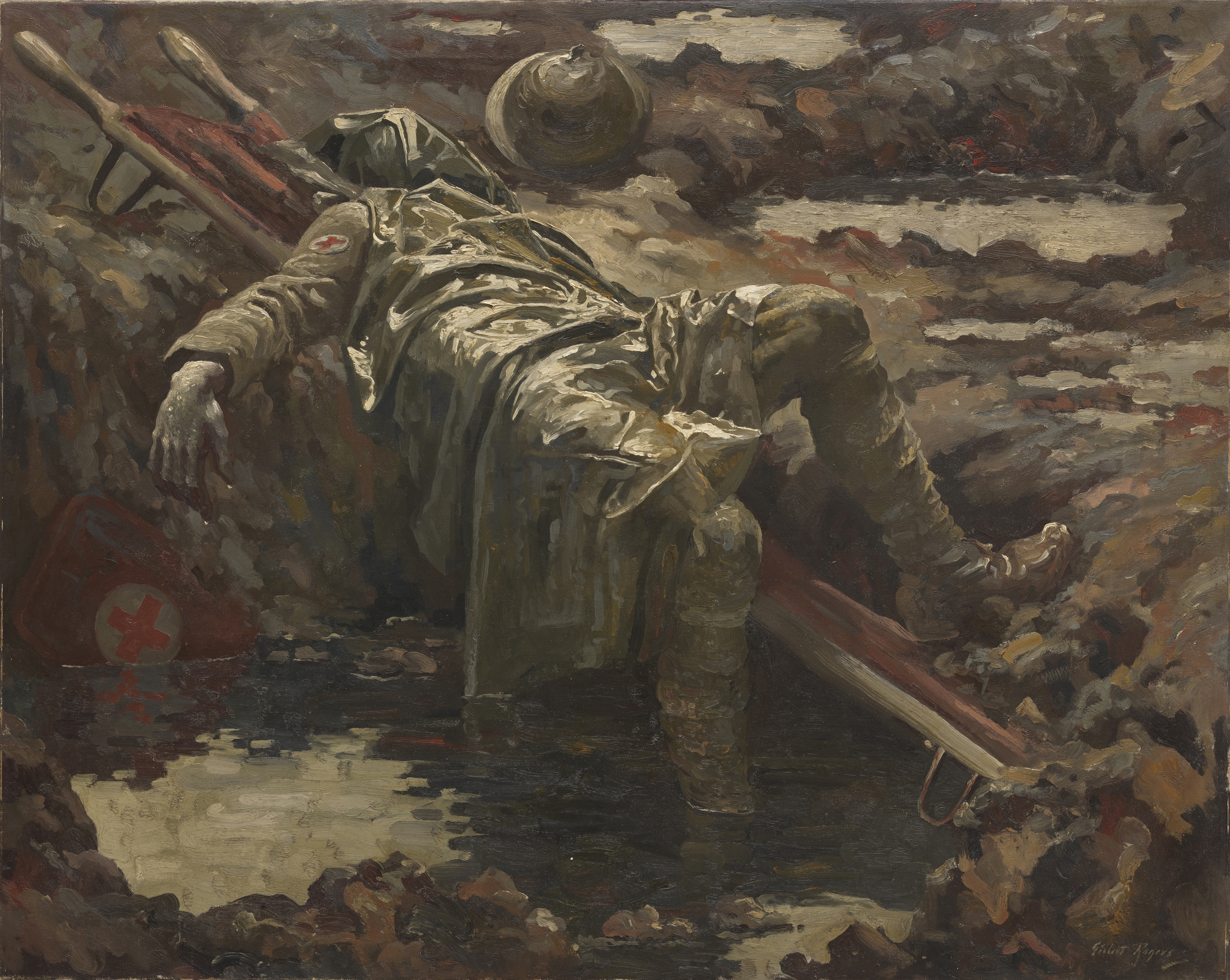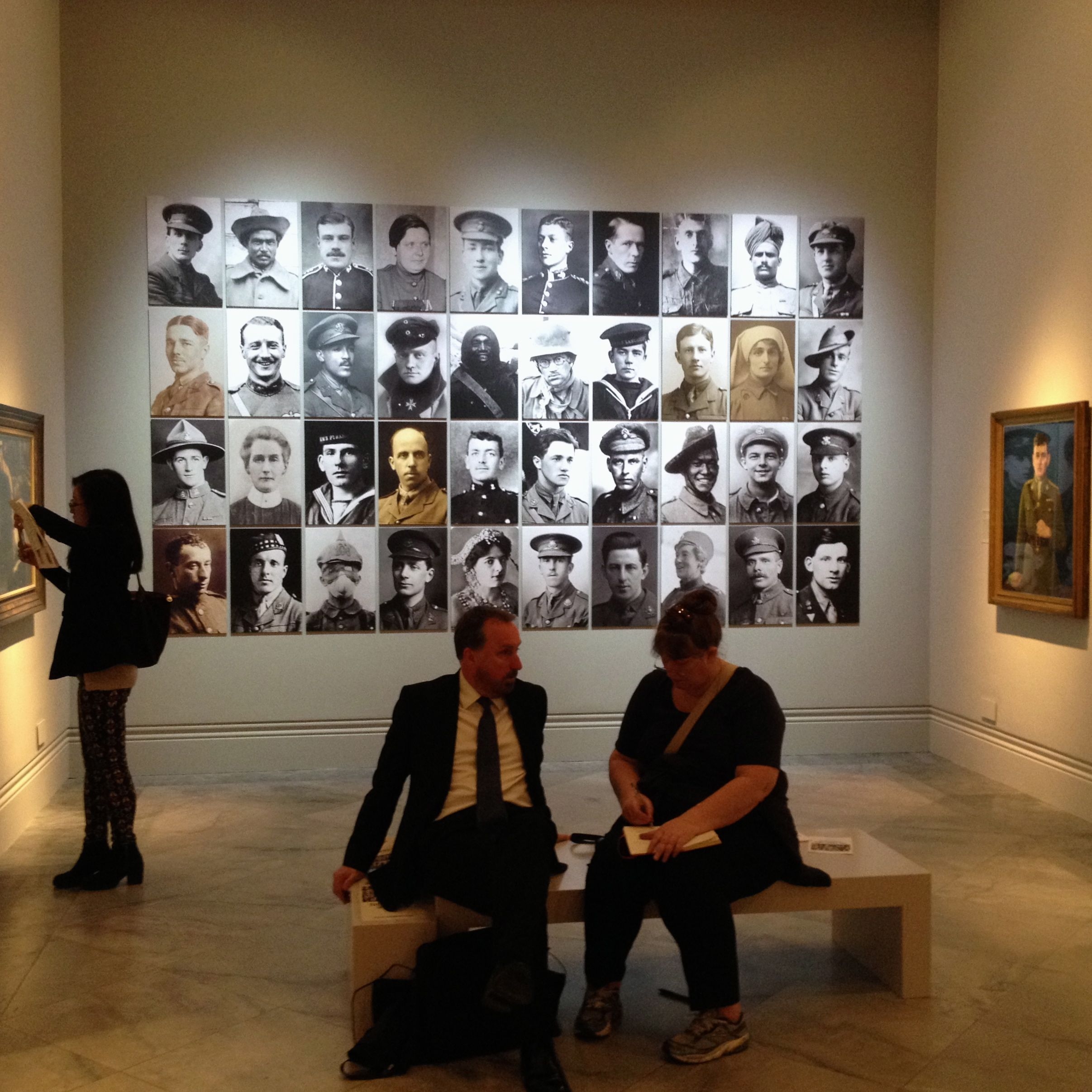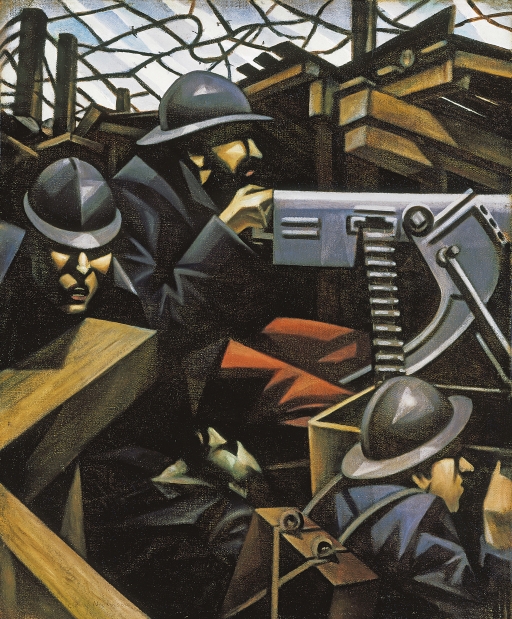A special exhibition has opened at the National Portrait Gallery in London, exploring the horror and tragedy of the First World War in the faces of those who fought and died.
This Centenary event is the culmination of three years of planning, and its curator, Paul Moorhouse, acknowledges that The Great War in Portraits offers a “bitter-sweet” view of the conflict.
He says: “Yes this is an industrialised war, the sabre and the casualty charge are consigned to history. In its place we have bombs, artillery, flame throwers, gas, a whole range of technology which vastly enhanced the capacity to kill and maim.”
“That’s all part of this exhibition and it’s impossible to deny it. But it’s not gloom and doom either.”
“You’ll find characteristics of human nature which I think are ennobling. I think you will find evidence of great heroism, great selflessness, friendship and extraordinary endurance under impossible conditions.”
Crowned heads
The scene is set with traditional portraits of the crowned heads of Europe in all their grandeur on the eve of war. But the exhibition starts as it means to go on, immediately presenting a contrast to that fragile splendour. Gavrilo Princip, the 19-year-old assassin of Archduke Franz Ferdinand, stares forlornly from a newspaper photo, soon after his arrest in the Bosnian capital, Sarajevo.
As Paul Moorhouse puts it: “All that imperial might, all that imperial splendour, all that pride, all that aggression brought down by so little. That’s what that room is about. It’s how about so much could be brought down by so little.”
Few images can be more haunting than Gilbert Rogers’ 1919 painting of a dead stretcher bearer (below). The portrayal of dead soldiers during the war was controversial, but as the exhibition points out, the official line softened afterwards in response to public demand for the truth.

The Dead Stretcher-Bearer by Gilbert Rogers,1919 ©IWM ART 3688
Rogers, who had served with the Royal Army Medical Corps, was appointed by the Committee for the Medical History of the War to lead a team of artists charged with representing the medical consequences of battle.
The dead stretcher bearer is juxtaposed with traditional portraits of military commanders from the opposing forces; Haig, Hindenburg, and Foch. Opposite them is the reassuring face of the ordinary soldier, in the form of William Orpen’s painting of an unidentified Grenadier Guardsman, his expression emphasising collective endeavour.
The central section of the exhibition, titled “the Valiant and the Damned,” is lined with portraits of winners of the Victoria Cross, and dominating the room, there’s a grid of 40 photographs (below) featuring faces, both familiar and unfamiliar, of those whose lives were caught up in the war.

Among them you will find pictures of the war poets, Wilfred Owen and Siegfried Sassoon, together with Lieutenant Walter Tull, the first black officer in the British army; the executed nurse, Edith Cavell; Jack Cornwell, the 16-year-old boy seaman posthumously awarded the Victoria Cross; and the German air ace, Manfred von Richthofen.
In this room too are portraits of facially injured soldiers by the artist Henry Tonks, shown for the first time alongside harrowing medical photos of the men undergoing treatment whom he depicted for the pioneering plastic surgeon, Harold Gillies.
The exhibition also breaks new ground by screening excerpts of the 1916 British documentary The Battle of the Somme, alongside Germany’s version, With our Heroes on the Somme. For those familiar with Second World War newsreels, the scenes of German stormtroopers on the march are an eery foretaste of events to come a generation later.
The British film includes one of the First World War’s most enduring images, that of a soldier making his way along a trench, staring briefly into the camera as he carries a mortally wounded comrade on his shoulders.
It is perhaps fitting in this context that the exhibition notes Field Marshal Haig’s reaction to his portrait by Orpen in 1917. Criticised later for wasting lives, the British commander-in-chief told the artist: “Go and paint the men. They’re getting killed every day.”
The Great War in Portraits can be seen at the National Portrait Gallery, London, until 15th June 2014. Admission is free
Images courtesy of Tate London, the Imperial War Museum, the National Portrait Gallery and Peter Alhadeff, Centenary News
Posted by Peter Alhadeff, Centenary News
